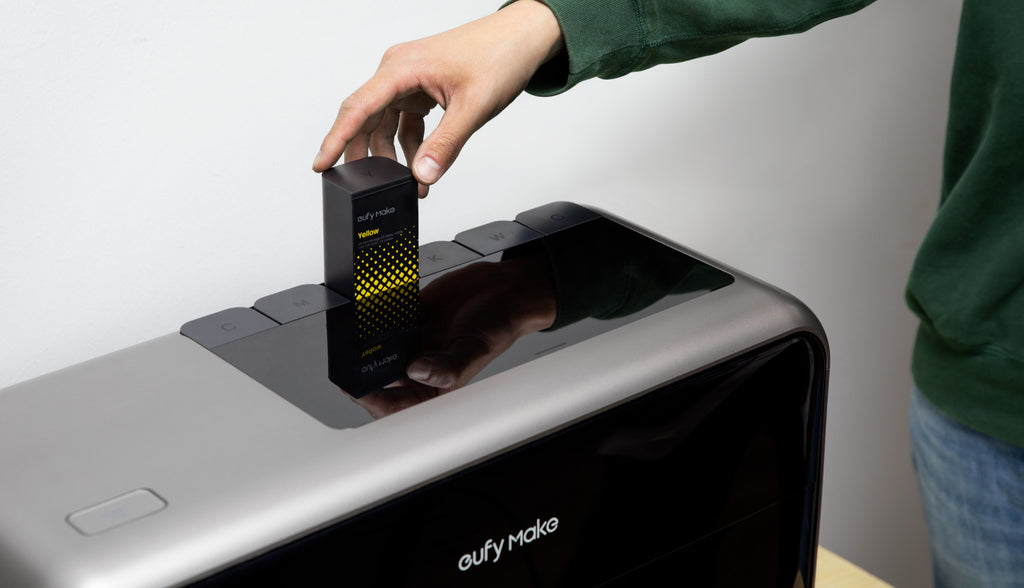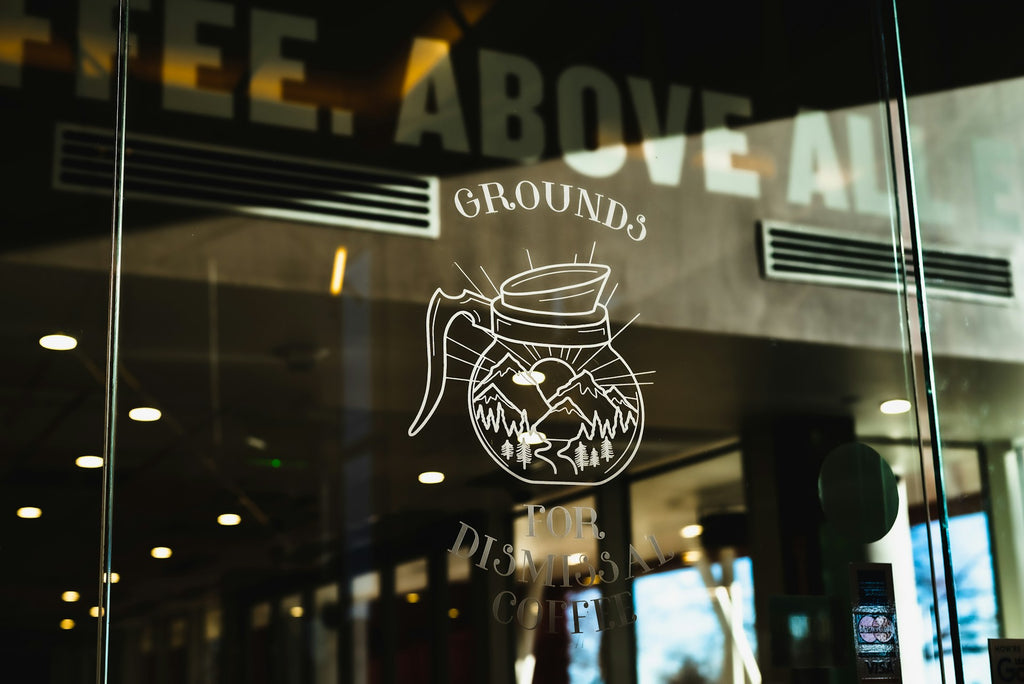UV printers are known for their powerful printing capabilities and wide range of applications.
With UV printers getting smaller and more affordable, they’re becoming accessible to more people than ever.
If you’re thinking about adding a UV printer to your business, hobby, or creative studio, you’re in the right place.
What is a UV Printer?
Before you buy, let's quickly clarify what a UV printer actually is.
UV printers use ultraviolet light to instantly cure or dry ink as it's printed onto all sorts of materials.
This technology makes it possible to get high-quality, durable prints on everything from plastics and metals to glass, wood, leather, and more.
And typically, there are four main types:
Flatbed UV Printers
A UV flatbed printer has a large, flat platform (the bed) where you place your materials. The print head moves over the surface, spraying UV ink as it goes. Typical parts include the print head, UV curing lamps, a sturdy frame, and a control panel.
If you want to print on flat, rigid items like wood, glass, or metal, this is your top choice.

UV Rotary Printer
A UV rotary printer is designed for printing on round objects. It uses a rotary attachment to spin bottles or mugs while the print head moves along.
Key parts are the rotary unit, print head, UV lamps, and a stable base.
If you often print on drinkware or other cylindrical products, this is the one to look at.

UV DTF Printer
A UV DTF printer is made to print on special film. It usually has a print head, UV lamps, a film feeder, and sometimes a laminator or heat press for transferring the design. If you want to print on textured or uneven surfaces, this type makes transfers easy.

UV Roll-to-Roll Printer
A UV roll-to-roll printer feeds flexible materials from a roll and prints continuously. It features a roll feeder and take-up system, print head, UV lamps, and tension controls. For long runs of flexible media like banners or stickers, this is the best choice for efficiency and consistency.
What Should You Consider Before Buying a UV Printer?
Now let’s get into the details. Here are the most important specifications and features to keep in mind.
Budget
UV printers are available at a wide range of price points. Entry-level models can start as low as $2,000, while industrial machines may exceed $100,000.
But a higher price doesn't always mean a better fit for your needs. The key is to find the right balance between your budget and the features that matter most.
As you read, keep your budget in mind to help decide what's essential and what's just nice to have.
Production Volume Needs
Think about how much you’ll print. This will directly affect the type and size of printer you should consider.
Ask yourself for these questions:
-
How many items do you plan to print per day?
-
Do you have busy seasons?
-
Are you planning to grow your business soon?
Printer Size
The next thing to think about is printer size, and honestly, it all comes down to how much space you've got.
If you're working from home or have a small shop, a desktop UV printer is a solid pick.These are small, easy to set up, and can sit right on a sturdy table. They're perfect for lighter workloads and won't occupy much space.
If you need something a bit larger, consider mid-size UV printers.These are freestanding and typically require approximately four to six feet of space. They provide you with more room to grow without completely taking over your workspace.
Then there are large-format and industrial printers.These can be more than ten feet wide and usually need their own dedicated area. Some are so heavy that you might need reinforced floors, especially in older buildings.

Print Area
The print area (or bed size) is the biggest item you can print at once.
A larger UV printer doesn't always mean a larger print area, so always check the actual bed size before making a purchase.
Most UV printers are grouped into three main sizes:
-
A4 (8.3 x 11.7 inch): Very compact, suitable for small crafts.
-
A3 (11.7 x 16.5 inch): Versatile, fits medium items like plaques and tablet cases.
-
Larger: Good for signage, industrial use, or batch jobs.
Generally, an A3 UV printer is a popular pick if you want versatility and quality in a compact size. A4 UV printers are more compact and affordable, but they aren't as common for commercial UV printing.
Pro tip: Buy for the largest item you want to print, not just your most common size. A too-small bed can limit you later.
Print Resolution
Print resolution, measured in dots per inch (DPI), is a key factor in determining the quality of your prints.
Typical DPIs include:
-
360 DPI: Good enough for simple graphics, basic color logos, or text.
-
720 DPI: Excellent balance. Crisp detail without sacrificing too much speed.
-
1440 DPI or more: Near-photographic quality, perfect for art prints, high-end signage
Most UV printers offer resolutions ranging from 360 to 1440 DPI, with 720 DPI being a good balance for most uses.
Higher DPI means your prints will have more detail and look sharper. But it also means slower print speeds.
If you mainly print large signs that are viewed from a distance, you don't need the highest resolution (it's a waste of time and ink) .
For products where detail is everything, higher resolution pays off.
Print Speed
Time is money in business operations. Printing speed can significantly impact productivity, especially for commercial applications.
Print speed depends on the number of print heads, resolution, hardware stability, and the performance of the ink system.
Small desktop printers might produce a few square feet per hour, while industrial models can handle hundreds.
Consider:
Consider:
-
The resolution you'll use most
-
The complexity of your images
-
The materials you'll print on
Height Adjustment
Height adjustment (Z-axis control) allows you to print on objects of varying thicknesses.
Most UV printers handle items around 2-3 inches tall, some up to 6 inches or more. If you print on taller objects, a wider adjustment range is essential.
Also, automatic height sensing saves time and reduces errors. While manual adjustment works, it can be time-consuming if you frequently switch materials.
For 3D texture effects, precise height control is essential.

Color Configuration
A UV printer's color setup decides what colors and effects it can create.
Most use CMYK (Cyan, Magenta, Yellow, and Black), which is fine for many jobs. If you need more accuracy, consider using a printer with extra colors, such as Light Cyan or Light Magenta.
White ink is another important consideration. With white base layers, you can print on dark or transparent material. However, white ink requires special handling and maintenance to prevent settling and clogging.

Software
The software that comes with your UV printer is just as important as the hardware itself. It controls every aspect of the printing process and can significantly impact your workflow efficiency.
Most UV printers come with their own proprietary software, often referred to as a Raster Image Processor (RIP). This software handles tasks like color management, job queuing, and print settings.
When evaluating printer software, consider these factors:
-
Is it easy to use? No one wants to spend weeks figuring out how to use it.
-
Does it work with the design software you currently use?
-
How robust are the color adjustment tools?
-
Can you save presets for different materials or job types?
Some printers come with basic RIP tools included, while others require you to buy third-party options.

Reliability and Support
We all hope every day will be smooth. Reality is, sometimes you'll hit snags. Here's what we need to consider:
-
Do they offer phone, email, or chat help, and during what hours?
-
Is the warranty straightforward, or buried in fine print?
-
Is there an active user group or online forum?
Sometimes, buying two smaller printers beats one giant. If one goes down, the other keeps jobs flowing, and multiple units can sometimes output faster (and let you handle separate materials or jobs at the same time).
Why Choose The eufyMake E1
Most UV printers make you choose between price, size, and function. eufyMake E1 doesn't.
It's the world's first personal A3 UV printer with 3D texture capability-compact enough to fit on a desk, but powerful enough to take on real production.
Built for more than flat surfaces
E1 starts as a UV flatbed printer, but its modular design means you're not locked in. Need to print mugs or tumblers? Add the rotary module. Want to handle stickers or films? Snap on roll-to-roll support. Looking to do UV DTF transfers? E1 includes its own laminator. One device, endless output.
Print what you want, on what you want
E1 supports both hard and soft UV inks, so that you can move between materials like acrylic, leather, glass, and vinyl without limits. No extra machines. No switching brands.
Less maintenance, more making
Self-cleaning, auto height sensing, and built-in camera alignment mean less downtime and fewer print errors. Whether you're just starting out or running a growing business, E1 helps you stay focused on creating, not fixing.
Advanced tools, simple setup
E1 was built for everyday creators. With intuitive software and AI-assisted controls, it's easy to get up and running. Plus, it supports full 3D texture printing, perfect for raised graphics, tactile finishes, or accessible designs.
With eufyMake E1, you're not just saving space. You're unlocking flexibility, expanding product lines, and getting pro-level output without the pro-level hassle.

eufyMake E1 UV Printer
Create stunning 3D texture and vibrant color on almost any surface. Compact yet versatile — built for both business and creative home use.
Making Your Final Decision
Take your time, ask questions, and use this guide to compare your options.
Buying a UV printer is a big investment, but with the right information, you’ll make a choice that serves you well for years.
Focus on your current and future needs, weigh the features that matter most to you, and don't forget to factor in long-term costs and support.
We hope this guide helps you understand what to look for and how to evaluate your options. If you have questions or want to share your experience, we’d love to hear from you!


